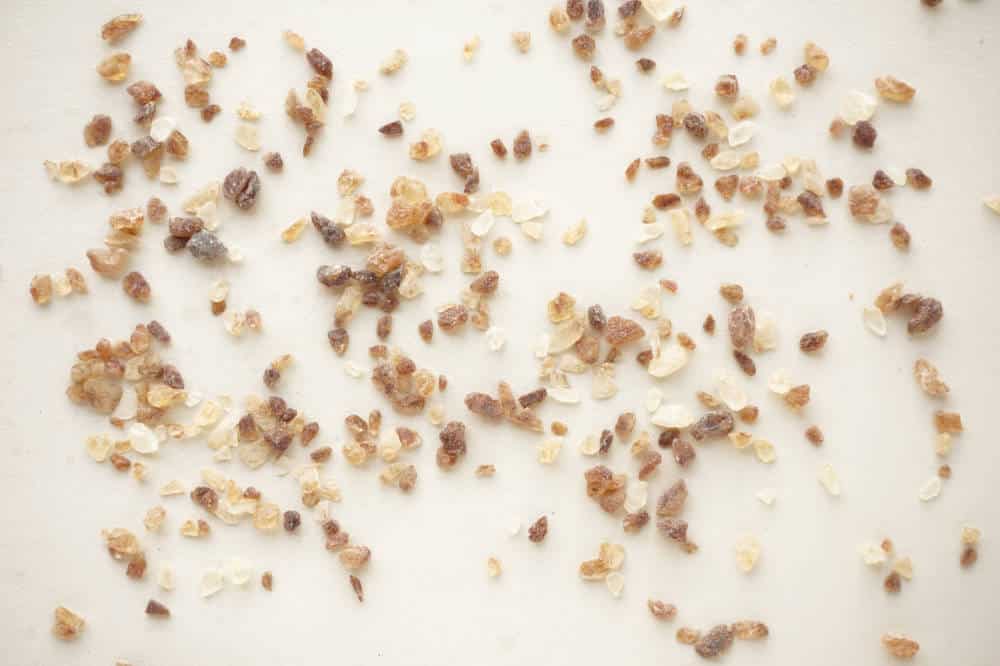Learn the science behind:

The Science of Sweeteners – Sugar vs Artifical Sweeteners
Sugars are hot nowadays. Is it still ok to eat sugars? Should you eat honey instead of regular sugar? Or would it be better to stick to maple syrup or dates in your pies? And what about those (artificial) sweeteners, what are they and are those ok?
It can become very confusing, especially if you aren’t familiar with all the terminology. This is where some good old food chemistry comes in handy. It can tell you what molecules since in which products and can help you tell the differences between those. Because even though dates and honey sound very different from sugar, they have a lot of similarities, chemically speaking.
On the other hand, there are sweeteners that are fundamentally different from regular sugar. They have a very different molecular structure.
You won’t find here which ones are good for you and which aren’t. This is a complicated and generally pretty nuanced story (it’s not that black and white) that we’ll leave to the food health experts. However, we are good in doing chemistry, which is what we’ll do here to help you undertand what’s going on in sugar land.
What is regular sugar?
Let’s start defining what sugars really are. Sugars are a group of molecules with a very similar structure that belong to the group of carbohydrates. Carbohydrates are a large group of molecules made up of only carbon, hydrogen and oxygen atoms. The carbon atoms form the backbone of carbohydrates with various oxygen molecules sitting on the sides.
The carbon atoms arrange themselves in circles (called monosaccharides) and these circles again link to one another to form long chains of these monosaccharides, forming di-, oligo- and polysaccharides. Those large ones are fibers and starches. It’s the smaller carbohydrates that are called sugars. They will consist of just one or two loops of carbon atoms (mono- and disaccharides) and they dissolve well in water.
Sucrose
Regular sugar, the one you buy in bags in the supermarket is sucrose. A sucrose molecule is a disaccharide, which means that it is made up of two monosaccharides: glucose & fructose. After eating sucrose it is broken down into glucose and fructose to be absorbed in the body. Most sugar in the world is made of either sugar beets (especially Europe) or sugar cane (more common in the Americas).

Sucrose is quite a special molecule. One of its main properties is how it dissolves in water. Sugar dissolves well in water, the warmer the water, the better it dissolves. Large quantities of sugar dissolved in water will even increase the boiling point of the solution, causing the sugar + water solution to boil at temperatures well above 100C. It is what allows you to make all those different candies such as caramel & brittle.

Milk sugar: lactose
Lactose is the sugar naturally present in milk. Lactose is also a disaccharide, however, instead of being made of glucose & fructose it is made of galactose (another single ring) and glucose. As a result its sweetness changes as well as its behaviour in the human body. It needs a slightly different enzyme to be broken down than sucrose and people who don’t have this enzyme are lactose intolerant.
Mixture of sugars: honey
In nature you will find a lot of natural products that contain a mixture of sugars. An example is honey. Honey mostly consists of fructose & glucose, the same building blocks as are present in sucrose, but they’re not attached to one another. Fructose and glucose by themselves are also just normal sugars.

Sweetness and sugars
Sugar is sweet, which is one of the reasons sugar is used so widely. But how sweet? That is actually a hard question to answer. There is not a measurement device to measure sweetness, like there is a thermometer for temperature. Instead, scientists have used people to determine sweetness.
In order to test for this sweetness people have to rank the sweetness of different sugar solutions. A way to do this is by giving people a solution of sugar in water, for example 10g of sugar in 1 liter. They will also give a range of concentrations of another sugar or sweetener in water (for example 0.1, 1, 10, 100 g/l). The tasters are then asked which of those solutions tastes as sweet as the original sugar solution, of course not knowing what it is they are tasting.
If the sugar concentration of similar sweetness contain 100 g/l that is a sign that the sugar is less sweet. You need more of it than the sucrose solution solution to get the same sweetness. To be exact, you need 10x more. If we now say that sucrose has a sweetness of 1, the sweetness of the alternative will be 0.1 (=1/10).
If you look for numbers on sweetness you will commonly find that sucrose is 100 (or 1.0) and that the other sugars have a value higher or lower than that of sugar. Those with a higher value are sweeter, those with a lower value are less sweet. Lactose and glucose are both less sweet than sucrose whereas fructose tends to be sweeter.

Other sweeteners
Sugars are sweet, but they aren’t the only molecules that taste sweet! There are a lot of sweet molecules out there (=sweeteners) that aren’t sugars. Also, there isn’t just one chemical structure that makes something sweet (which is different than salt for instance).
What makes something sweet is actually quite complex and involves some intense chemistry and interactions between your taste buds and sweet molecules (read more in the book Food Chemistry, mentioned below in the Sources paragraph).
Accidental discoveries
In the past decades a range of other sweeteners have been discovered. Seeing how the criteria for something being sweet are quite complex, most of these sweeteners have actually been discovered by accident! In most cases chemists working in the lab somehow licked their fingers or touched their food while or after working in the lab and noticed them to be sweet! By backtracking what they’d done they figured out what caused the sweetness. (The importance of taking good notes while you work!)
Some of these discovered compounds happened to be a lot sweeter than sugar! Aspartame, saccharin and sucralose are all examples of this, they are more than 100 times sweeter than sugar. In other words, you need less than one-hundredth of the regular sugar content to make something taste just as sweet.

Artificial vs natural sugars
Since most of these accidental discoveries where done in chemistry labs they tend to be artificial sugars. In other words the components don’t tend to appear in nature as such and they are made by humans. However, nature has also made other components which are sweet and aren’t sugars. Common structures of these components are proteins or so-called glycosides. These types of structures seem to be able to have those properties required to be sweet. Again, that doesn’t mean that all proteins are sweet of course, good thing it isn’t or your meat or cheese would be sweet as well.
A very common example of a naturally occurring sugar is stevia which contains two glycosides. Another one is glycyrrhizin which is naturally present in liquorice.
Sugar alcohols
Apart from these accidental discoveries there is another group of molecules with quite some sweetness that looks a lot more like regular sugar (from a chemist’s point of view). These are the so-called sugar alcohols. Examples are xylitol, mannitol and sorbitol. Most (except for xylitol) are less sweet than sucrose. A big disadvantage of them is that when you eat them in large quantities, they can work as a laxative or give other types of bowel problems.

Why use sweeteners instead of sugar?
The main reason for industry to avoid using sugars is to reduce the caloric content of food. In other words, the amount of energy that you take in upon eating the sugars. Sugars are a good source of energy for your body. However, most of these sweeteners barely contain any energy for the body. The body often cannot digest them to release energy.
Prevent chemical reactions
Regular sugars have another property which isn’t always desired: they participate in quite a lot of chemical reactions. If you don’t want these to happen, using sweeteners can be a good alternative.
A group of these sugars, the so-called reducing sugars, will participate in the Maillard reaction. This is a reaction between sugars & proteins that causes food to brown (e.g. your bread or meat). It speeds up at higher temperatures but even at room temperature it might cause browning of foods, be it over a long (months) period of time.
Almost all sugars can also serve as food for micro organisms. If you want to sweeten your alcoholic drink (which contains yeasts) you can’t add these sugars since the yeasts will come back to life and start fermenting the sugar into alcohol again. You will therefore sometimes (though this isn’t very common practice) find sweeteners added to alcoholic drinks.
Reducing sugar in foods & drinks
Even though there are thus a lot of ways to sweeten foods and drinks. It isn’t always easy to replace sugars with another sweetener. How easy that is depends on the food or drink you’re trying to change. The pH (acidity) of a food or drink is of importance since the pH can often impact other molecules and their tastes. Also, sugar might not only be in a food or drink to sweeten it. It might also be part of the structure of the food (as is the case for meringues & caramel for instance). Just taking out sugar and replacing it with another sweetener will keep the sweetness, but you might be taking away a third of your mass. This will make a completely different product.
That said, in other products it’s easy. If the sugar is only there to make something sweet, e.g. a sugar coating around your cereals. You can just take out that coating. Apart from people maybe disliking it a bit more (preferring the sugared version) the product will still work.
The future of sugar & sweeteners
Without diving into the health discussions on sugars and sweeteners, not my field of expertise, there is doubt to be a lot of continuing research into sugars in the coming years.
Seeing as how most of our artificial sweeteners have actually been discovered by accident, there might well be something sweet hiding out there!
Sources
Food Chemistry, by H.-D. Belitz, Werner Grosch, Peter Schieberle, 4th revised and extended edition, 2009
Podcast Science vs., episode: Artifical sweeteners – not so sweet? by Gimlet media
Sweetener book, by D. Eric Walters, discussing a whole range of different sweeteners, a lot of useful basic information
What's your challenge?
Struggling with your food product or production process? Not sure where to start and what to do? Or are you struggling to find and maintain the right expertise and knowledge in your food business?
That's where I might be able to help. Fill out a quick form to request a 30 minute discovery call so we can discuss your challenges. By the end, you'll know if, and how I might be able to help.




